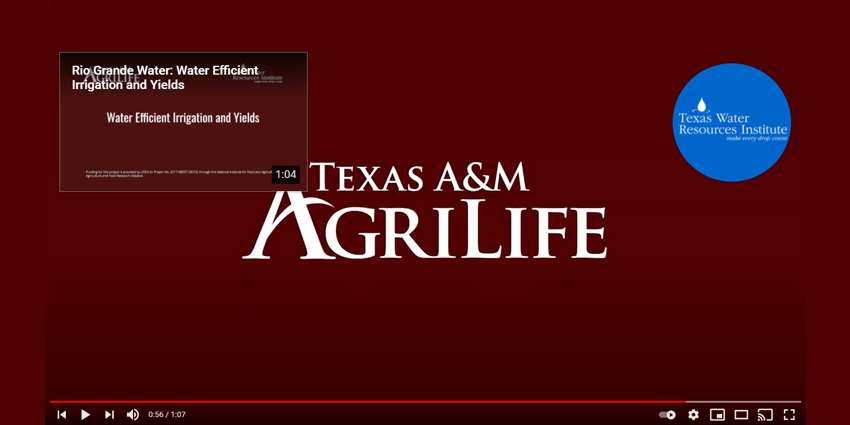A series of videos have been produced about irrigation methods along the Rio Grande as part of the Diversifying the Water Portfolio for Agriculture in the Rio Grande Basin, a Coordinated Agriculture Project (CAP).
The Rio Grande is the fourth-longest U.S. river. It is also one of the world’s most endangered rivers. Population growth and demand for municipal water supplies in the basin are expected to double over the next 50 years while agriculture uses 80 percent of the water from the Rio Grande. Climate change is projected to increase temperatures and decrease net available water. Improving irrigation techniques in agriculture along the Rio Grande is essential.
The project’s long-term goal is to optimize water resources to help sustain agricultural production while enhancing regional water use efficacy and economic and employment opportunities, and improving ecosystem services.
Watch the series below or on YouTube:
1. Water Efficient Irrigation and Yields
2. Irrigation’s Impact on Texas Agriculture
3. Irrigation Water Sources and Threats
4. Groundwater Districts in Texas
5. Irrigating with Pipes
6. The Advantages of Polypipe — Water Savings
7. The Advantages of Polypipe — Labor Savings
8. Considerations on Polypipe

